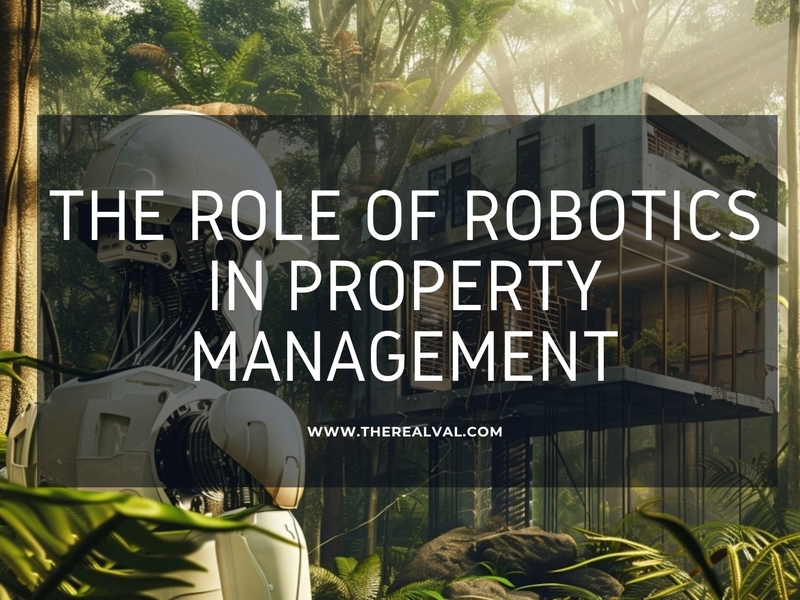In recent years, robotics technology has been transforming the world, including the property management industry, redefining how buildings are maintained, secured, and operated. This cutting-edge innovation is revolutionizing real estate management by boosting efficiency, reducing costs, and enhancing tenant experiences like never before.
Property management firms are increasingly integrating robotics into daily operations, automating tasks once handled by human staff. From autonomous cleaning machines to AI-powered security robots with advanced surveillance capabilities, these smart systems are streamlining processes and improving overall building management.
Key Uses of Robotics in Property Management-
The adoption of robotics in property management is transforming several critical areas, enhancing efficiency and precision across operations:
- Cleaning and Maintenance: Autonomous cleaning robots are now a staple in commercial buildings, handling tasks like vacuuming, floor scrubbing, and even window washing for high-rises. These machines operate after hours, ensuring spotless spaces without disrupting tenants.
- Security and Surveillance: Security robots patrol properties on predetermined routes, equipped with cameras, sensors, and sometimes facial recognition technology. They detect unauthorized access, unusual activity, and safety hazards, providing continuous, fatigue-free monitoring.
- Property Inspections: Drones and ground-based robots conduct thorough property inspections, reaching difficult or hazardous areas with ease. They are particularly useful for roof assessments, HVAC system checks, and post-disaster damage evaluations.
- Lawn Care and Landscaping: Robotic mowers and specialized landscaping machines maintain outdoor spaces with precision, adhering to schedules that minimize disruption for residents and visitors.
Benefits of Adopting Robotics-
The increasing use of robotics in real estate management is driven by several compelling benefits that improve operations and cost efficiency:
- Boosted Operational Efficiency: Robots perform repetitive tasks with unmatched consistency and precision. Unlike human workers, they don’t tire, can operate 24/7, and maintain peak performance, ensuring higher service reliability.
- Significant Cost Savings: Although the upfront investment in robotics can be high, long-term savings are substantial. Many property management firms report reduced labour costs, lower liability insurance premiums, and decreased operational expenses. Most companies see a return on investment (ROI) within 18 to 36 months, depending on the scale of deployment.
- Enhanced Safety Standards: Robots take on high-risk tasks, such as inspecting structurally compromised areas or cleaning high-rise windows, reducing the risk of workplace injuries. This leads to fewer workers’ compensation claims and lower insurance costs.
- Data-Driven Decision Making: Modern property management robots are equipped with sensors that collect valuable operational data. This information helps managers identify patterns, predict maintenance needs, optimize energy use, and make informed property improvement decisions.
Challenges and Limitations of Robotics in Property Management-
Despite its many advantages, integrating robotics into property management comes with several challenges:
- High Initial Costs: Sophisticated robotic systems require substantial upfront investment, which can be prohibitive for smaller property management firms and individual landlords.
- Technical Limitations: While robots excel at repetitive tasks, they still struggle with complex activities requiring human judgment, adaptability, and fine motor skills.
- Integration with Existing Systems: Deploying robotic solutions often necessitates modifications to existing property management systems, which can disrupt operations during the transition.
- Human Acceptance: Staff and tenants may initially resist robotic systems, perceiving them as impersonal or as potential job threats.
Future Trends in Property Management Robotics-
The evolution of robotics is set to bring even more sophisticated advancements to real estate management:
- AI-Enhanced Capabilities: Future robots will feature advanced artificial intelligence, allowing them to make real-time decisions, adapt to changing environments, and improve efficiency through machine learning.
- Multi-Function Robots: Instead of single-task machines, next-generation robots will seamlessly transition between multiple functions, such as cleaning, security, and maintenance.
- Humanoid Interfaces: Some property management companies are exploring humanoid robots for concierge and front-desk roles, providing a more interactive and personalized tenant experience.
- IoT Integration: The combination of robotics with Internet of Things (IoT) technology will create intelligent building ecosystems, where automated systems and sensors collaborate for optimized operations.
Robotics is no longer a futuristic concept, but a reality transforming real estate management today. As technology advances and costs decrease, robotic solutions will become more accessible to properties of all sizes.
The most successful property managers will be those who strategically integrate automation while maintaining the human touch essential for tenant satisfaction. While robots won’t replace property managers, they will reshape roles, streamline operations, and drive efficiency in an increasingly automated industry, and create a competitive edge in the evolving property management landscape.
Trending





